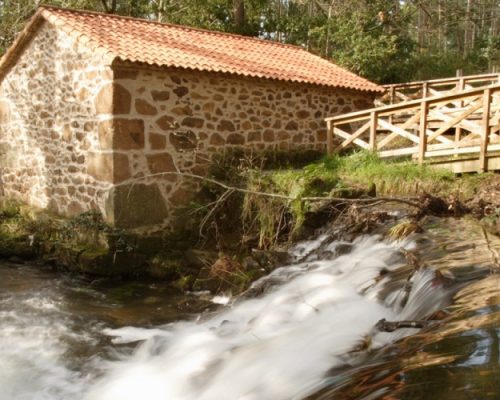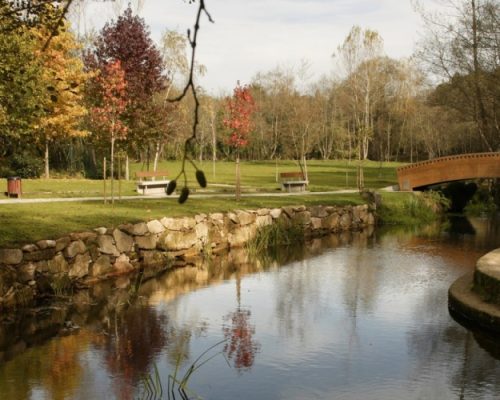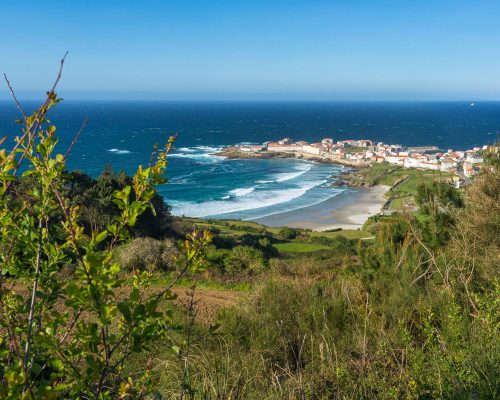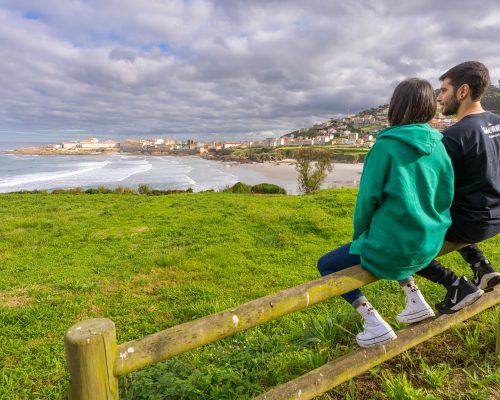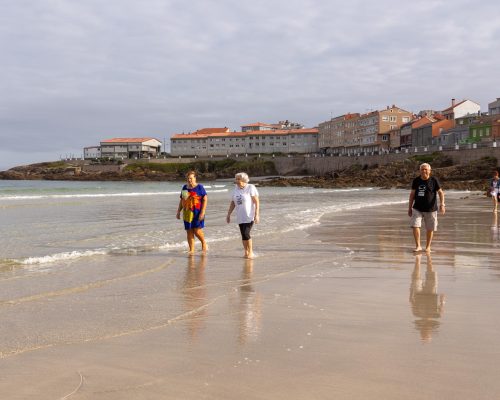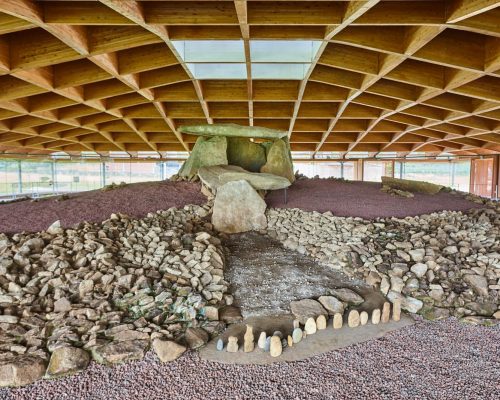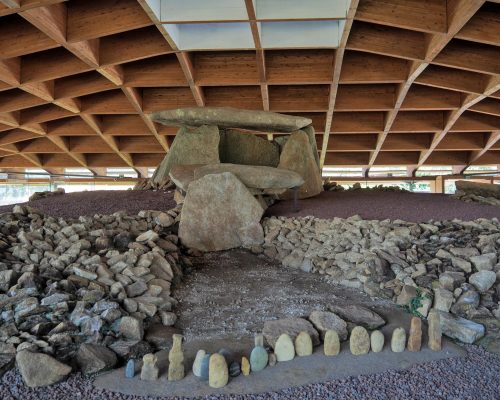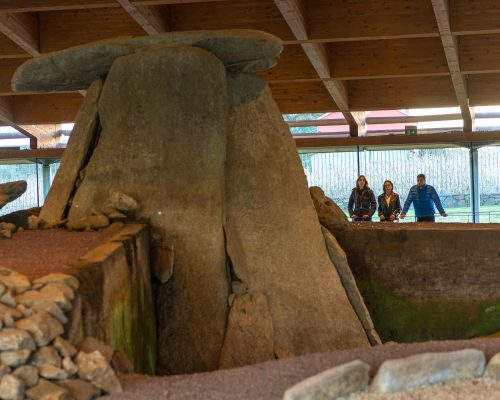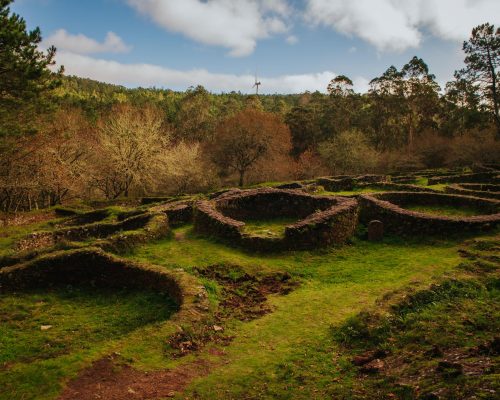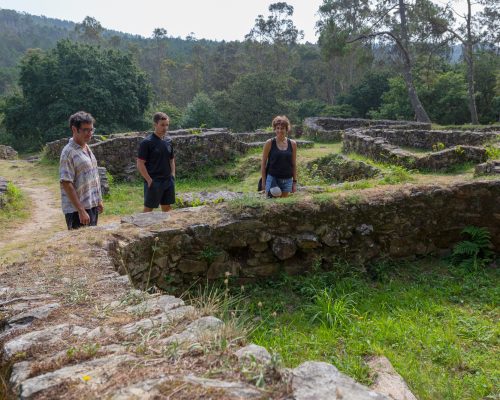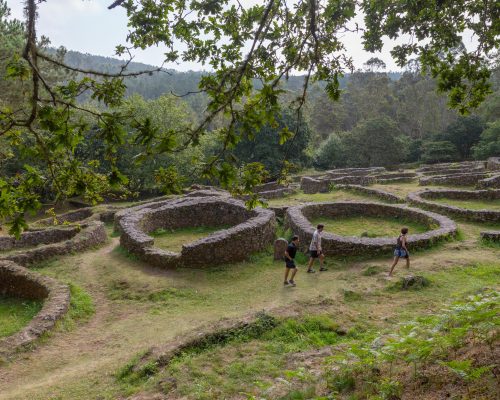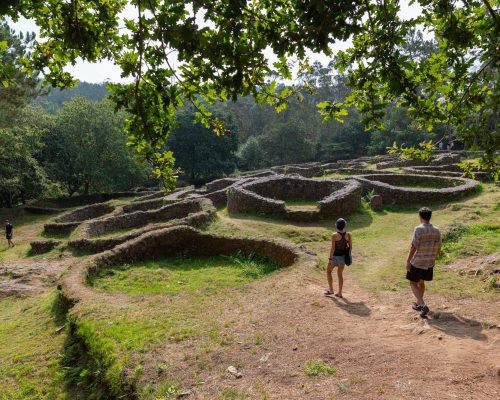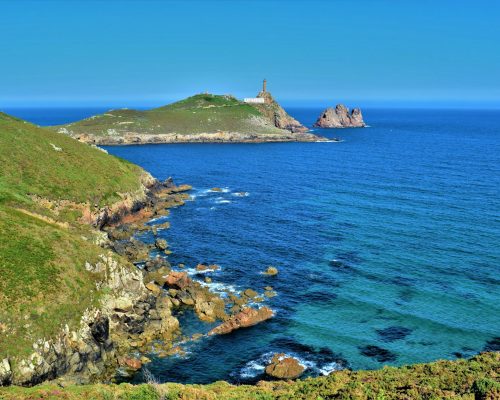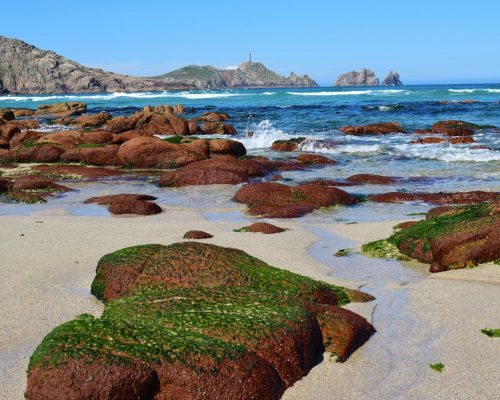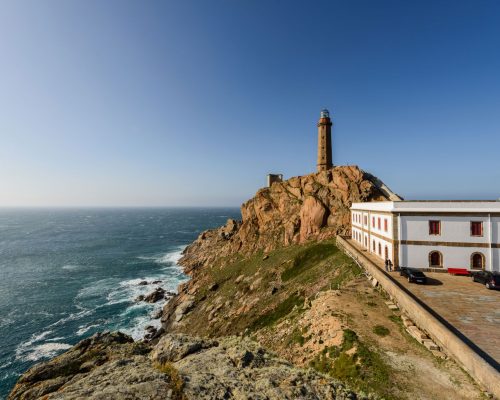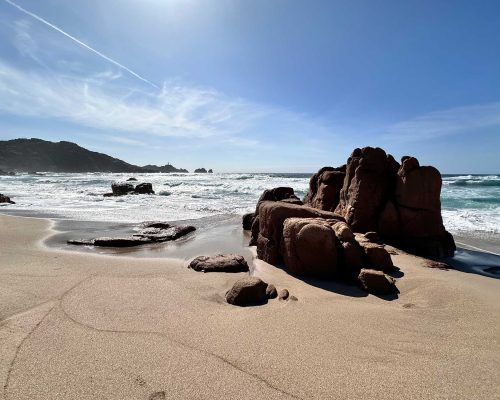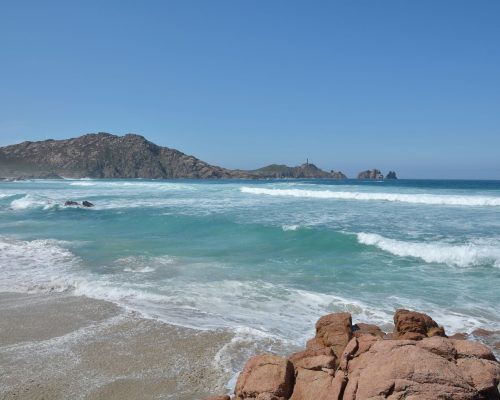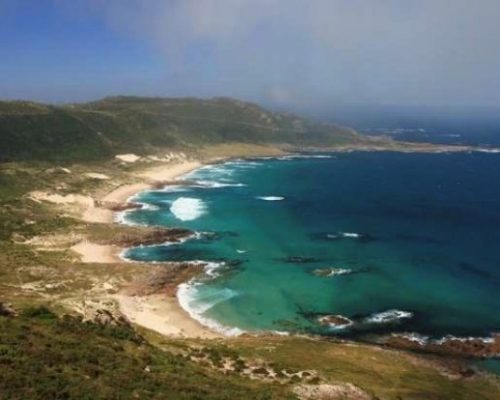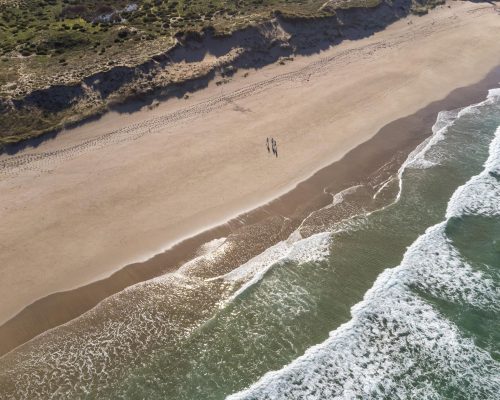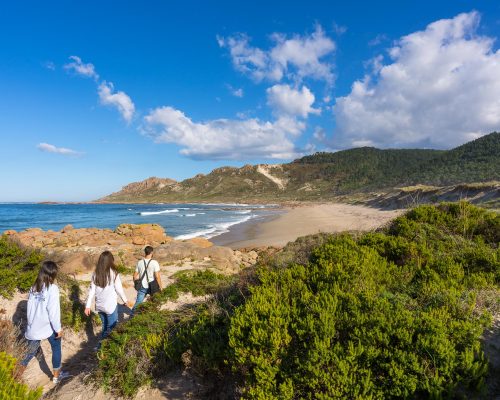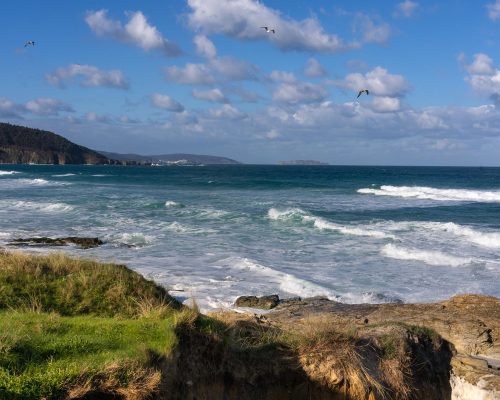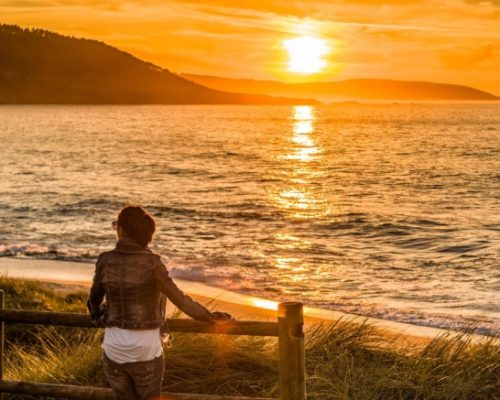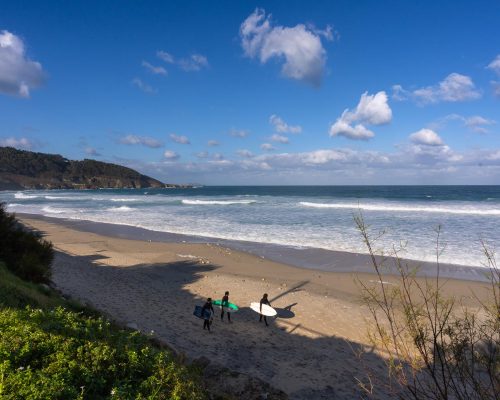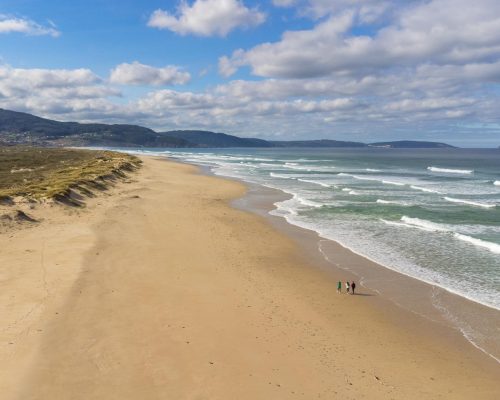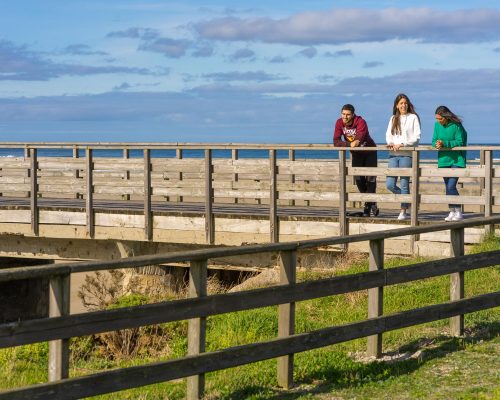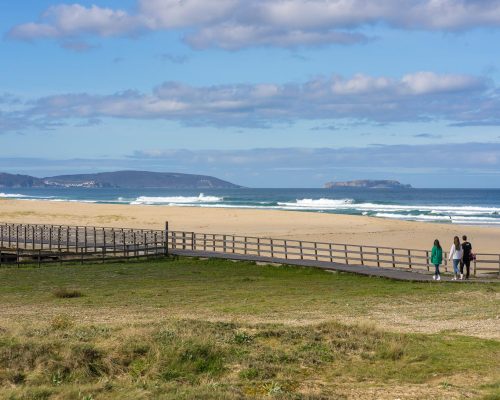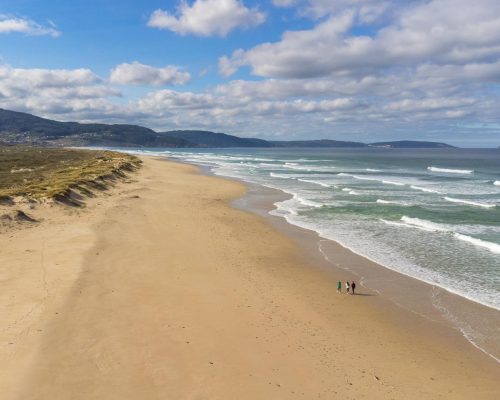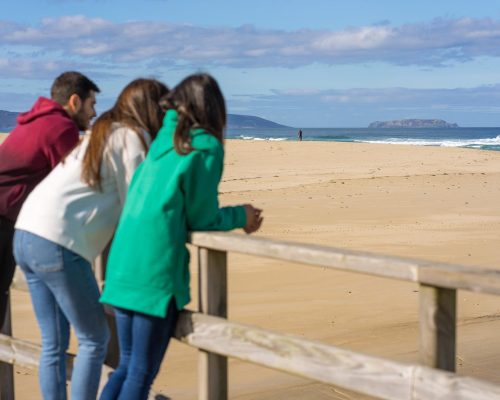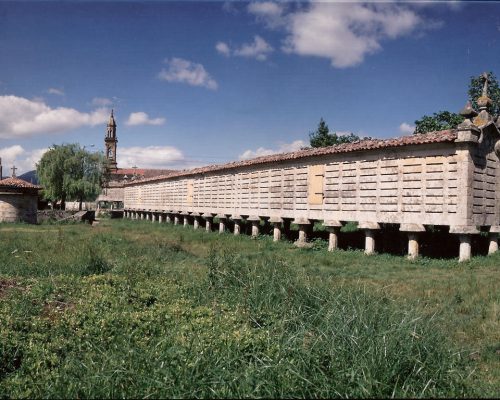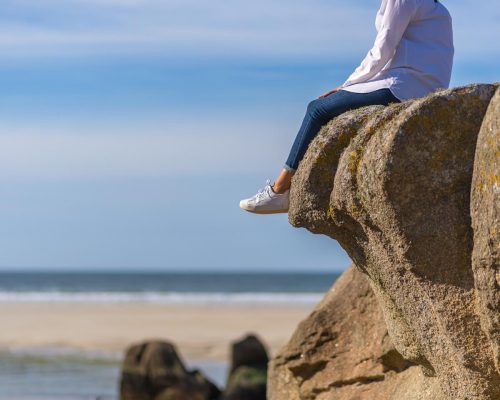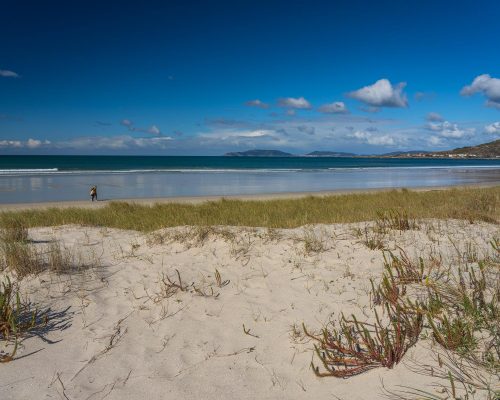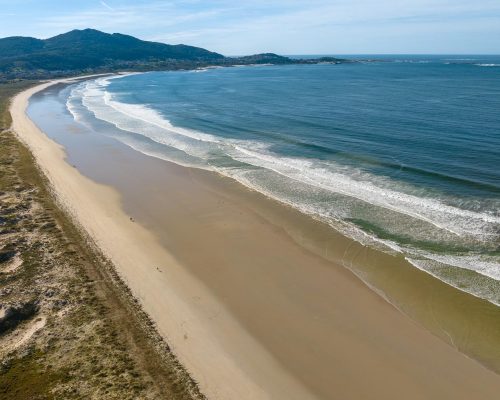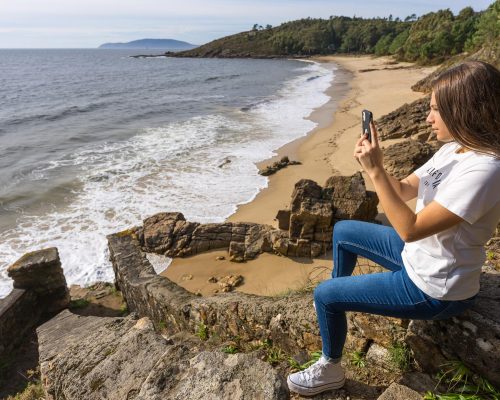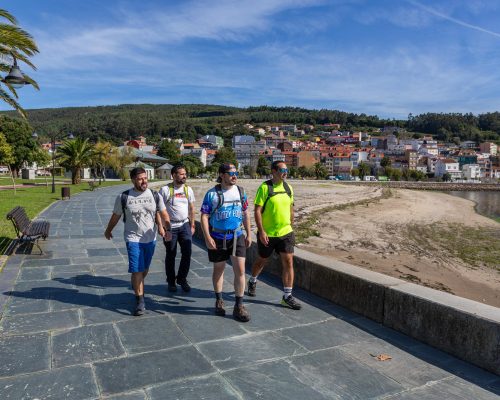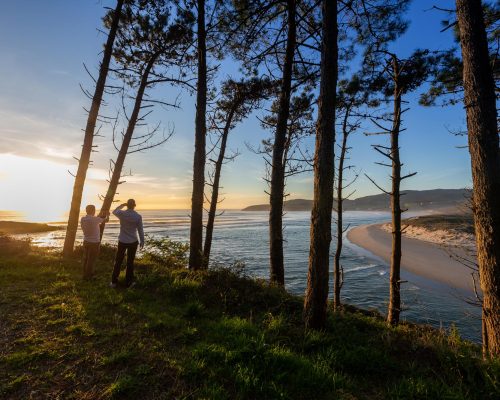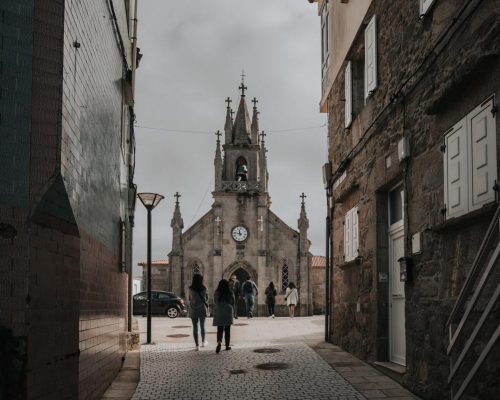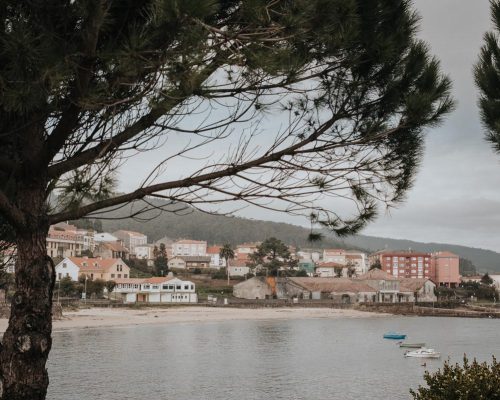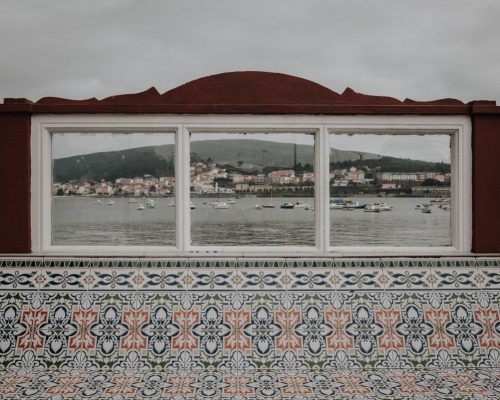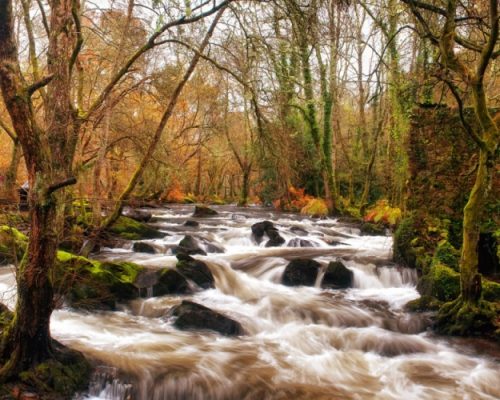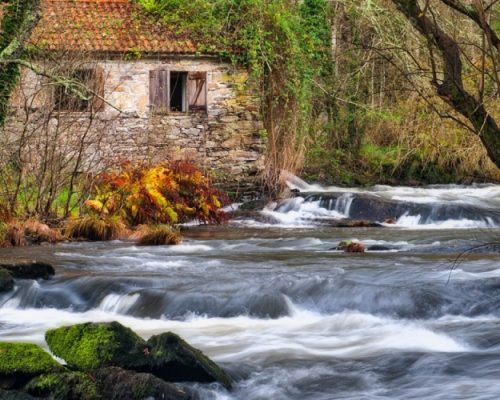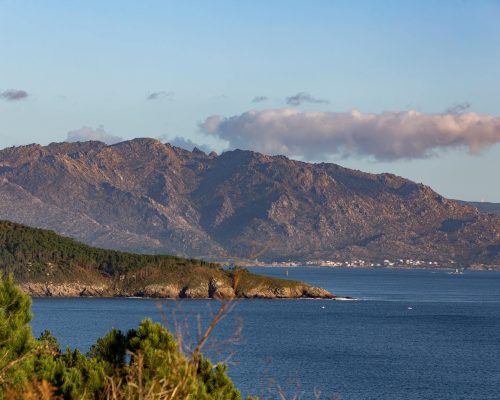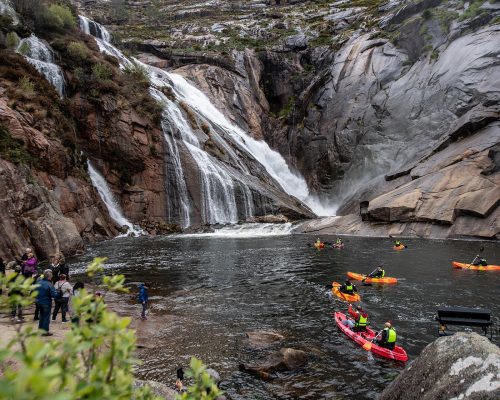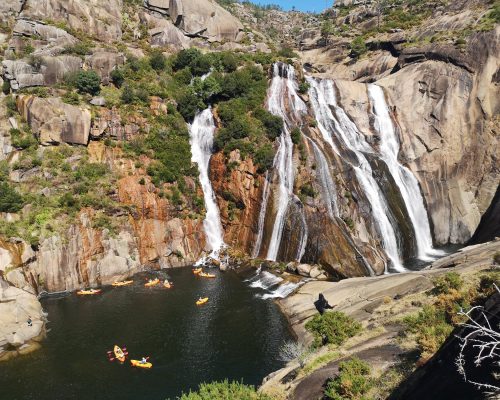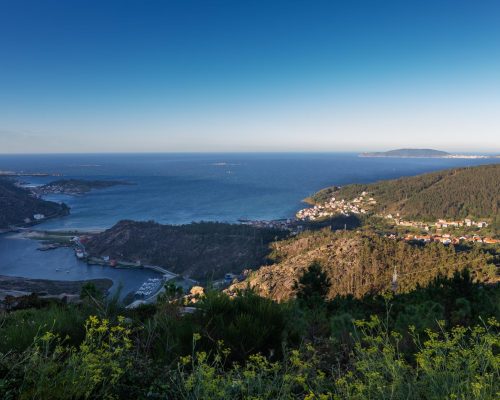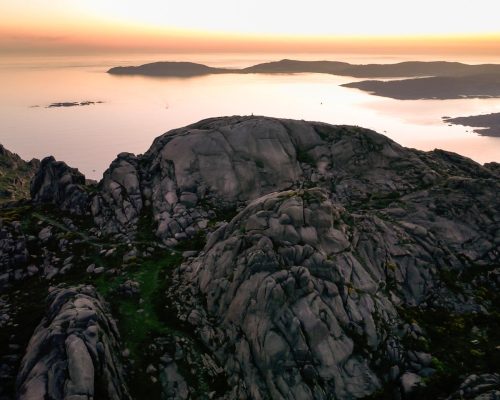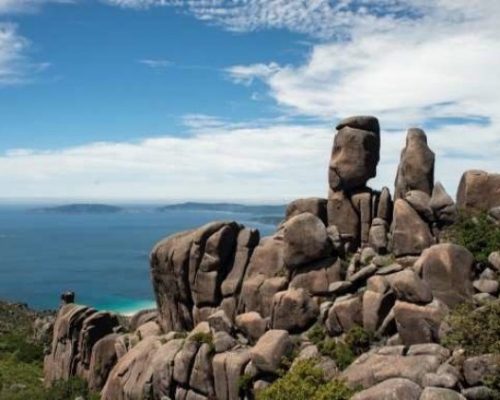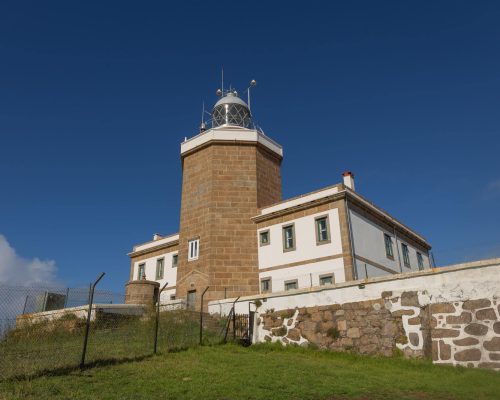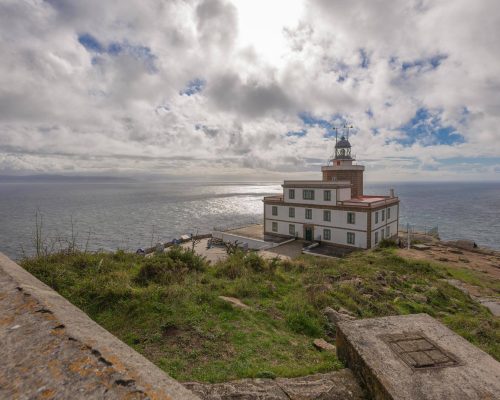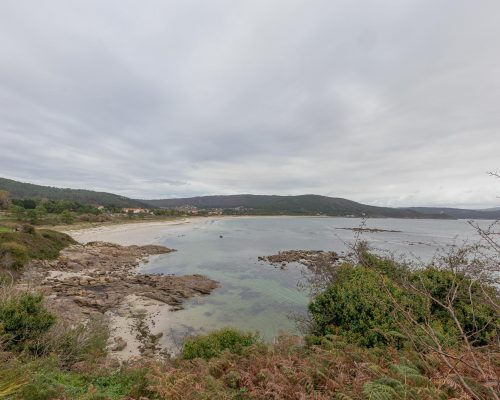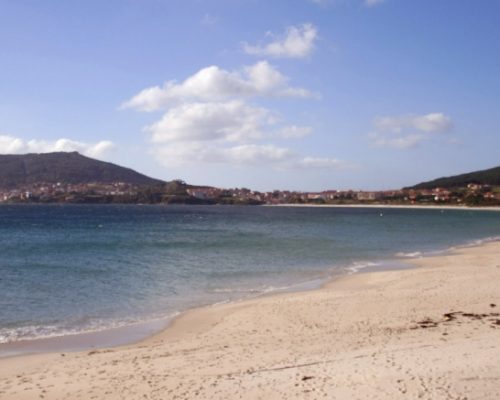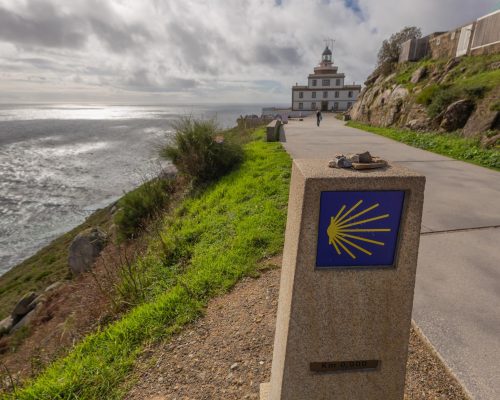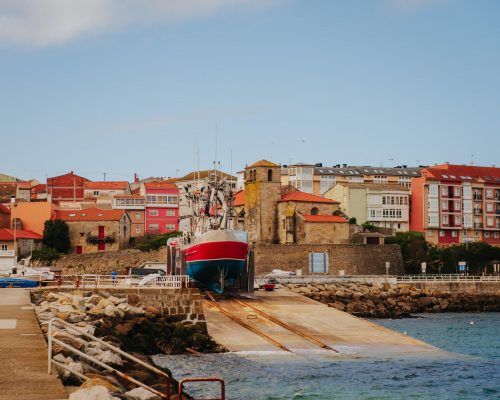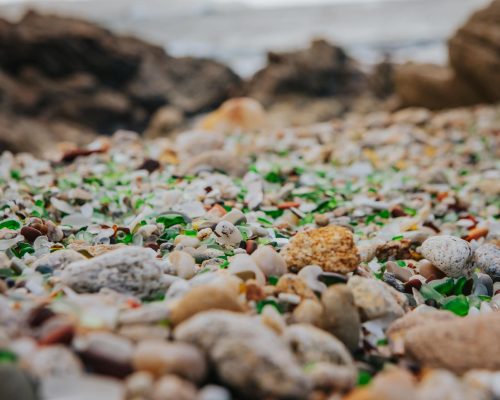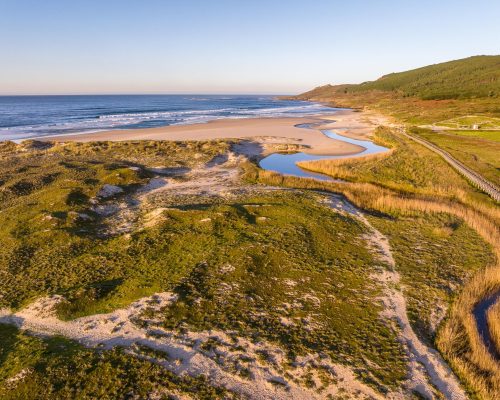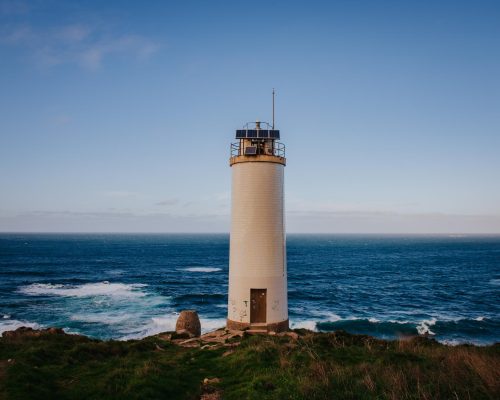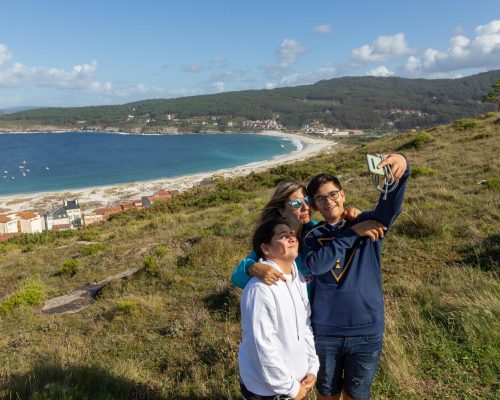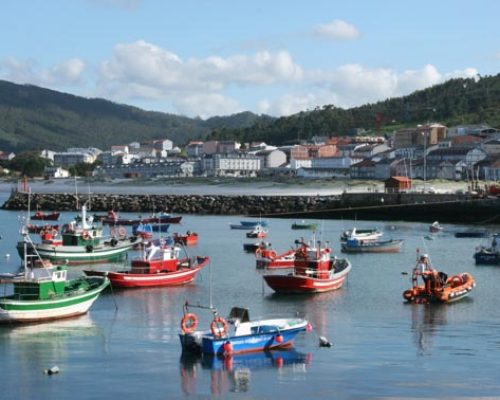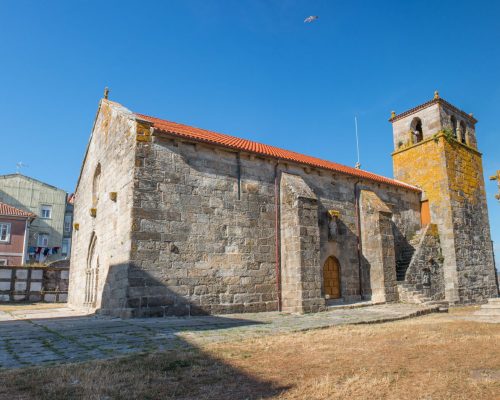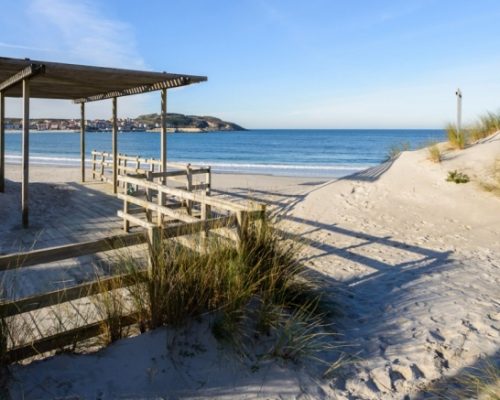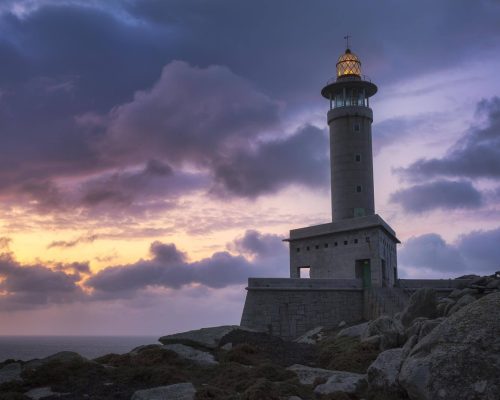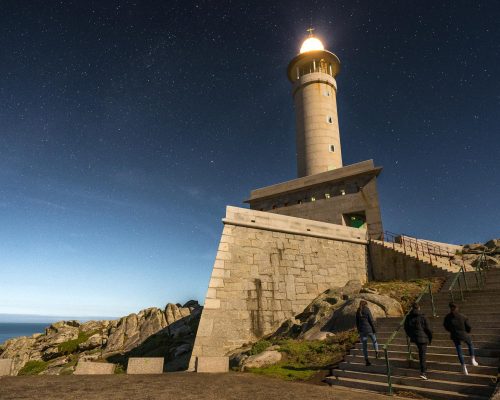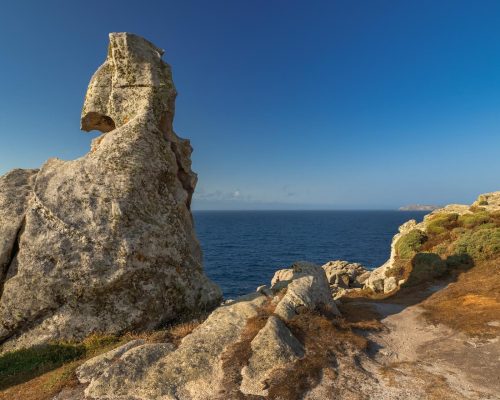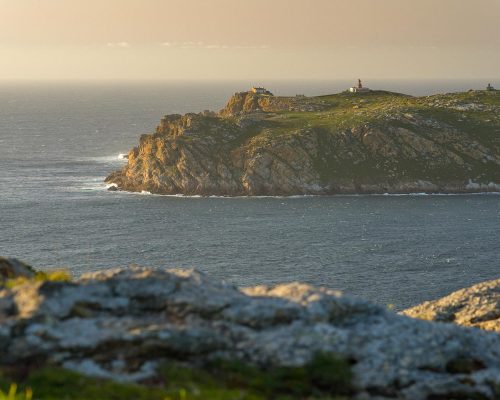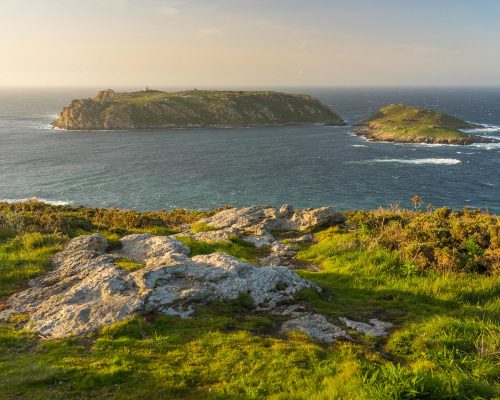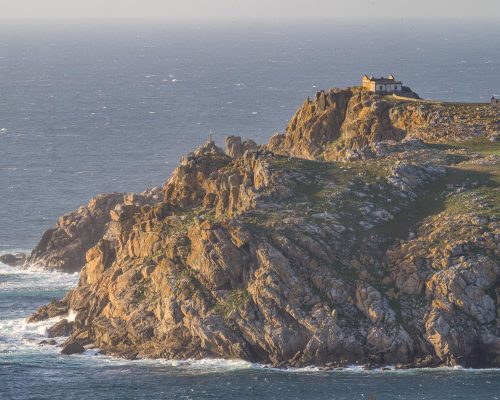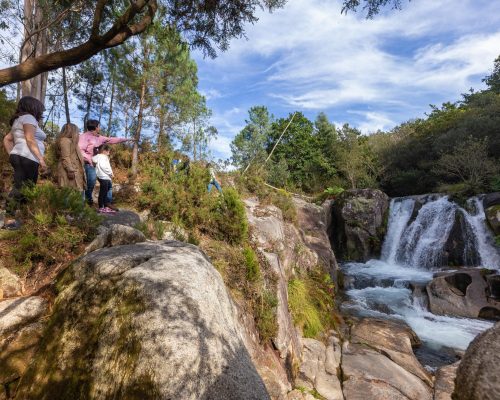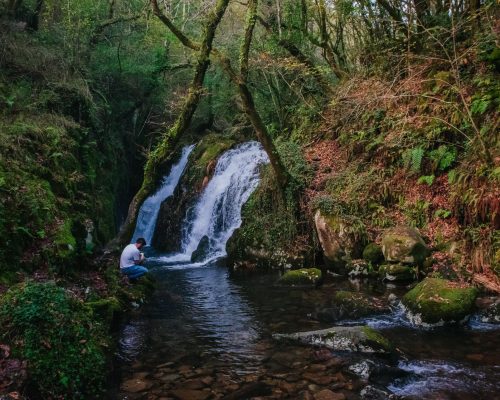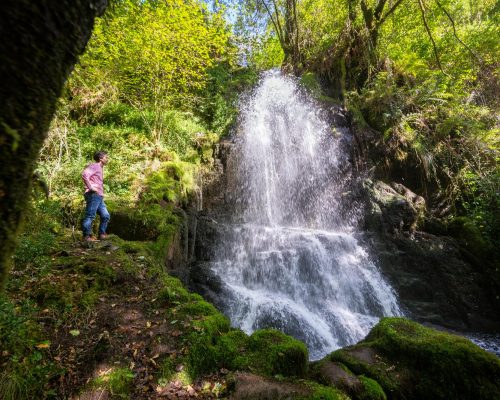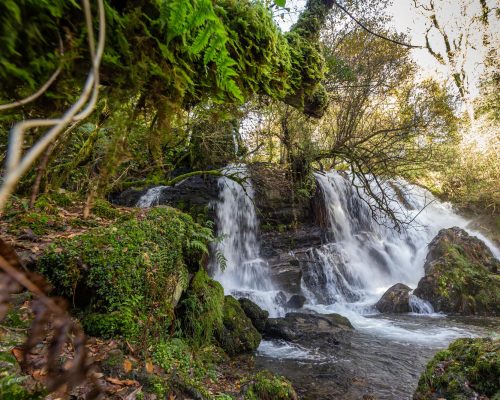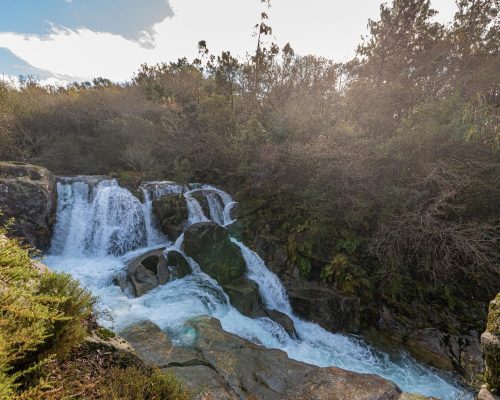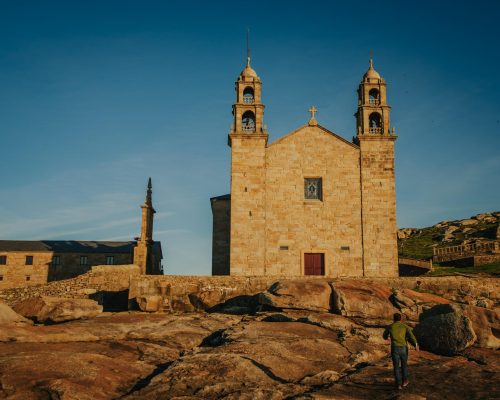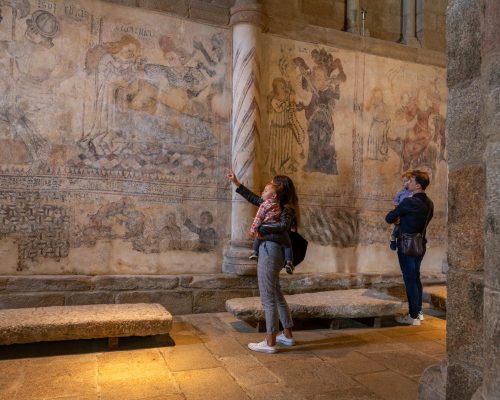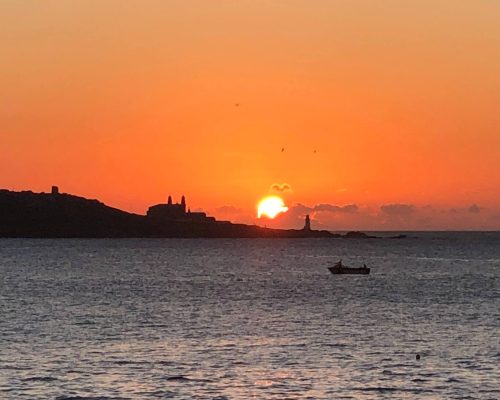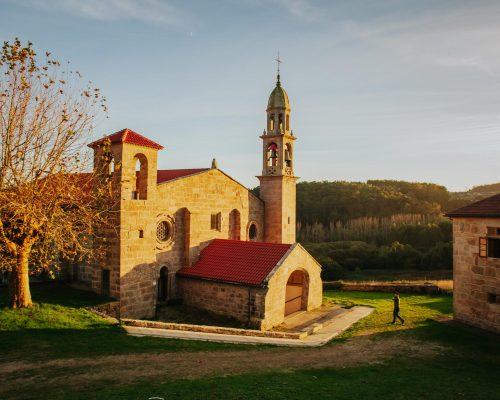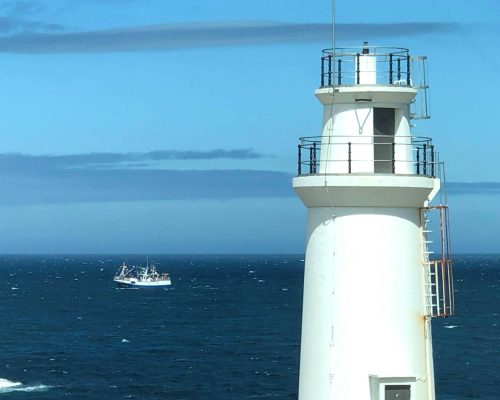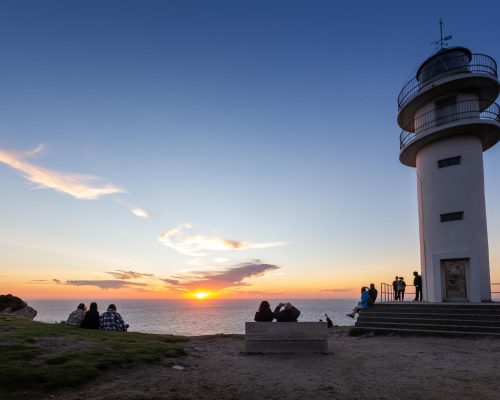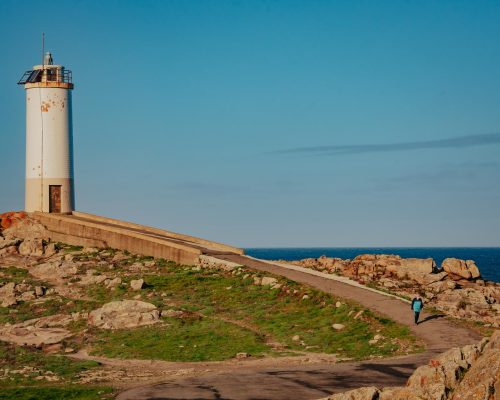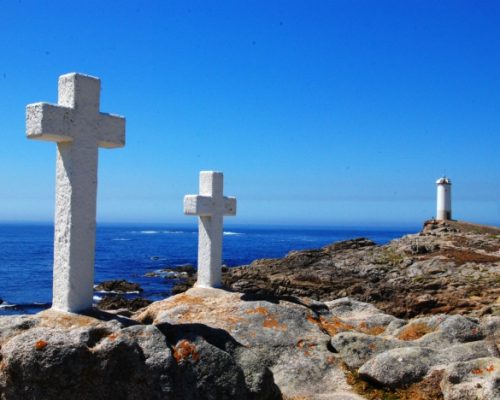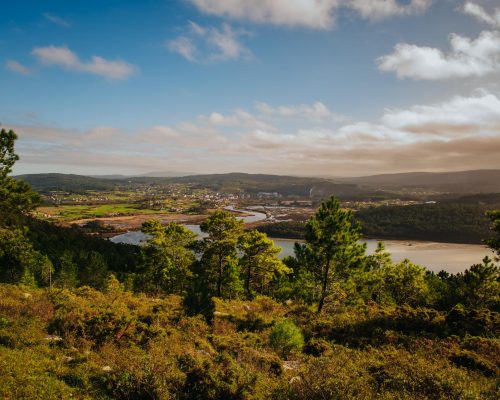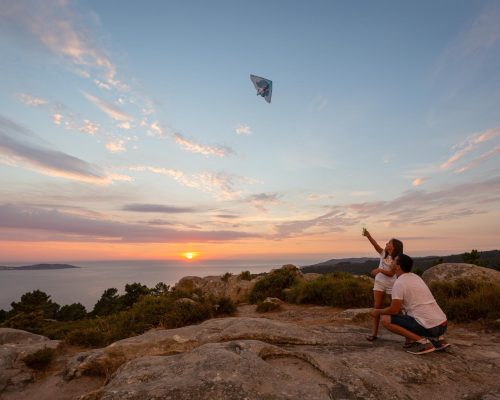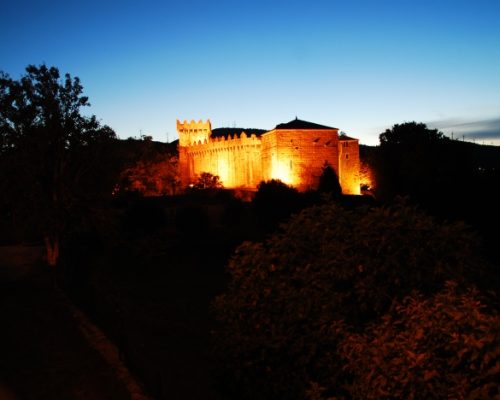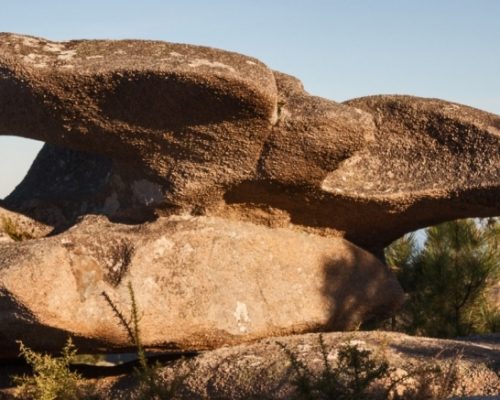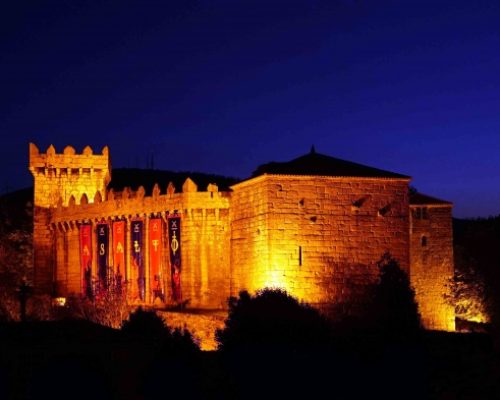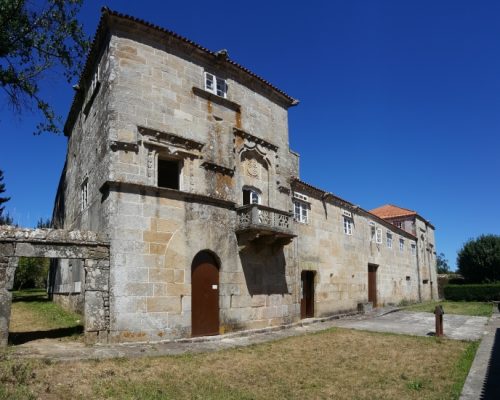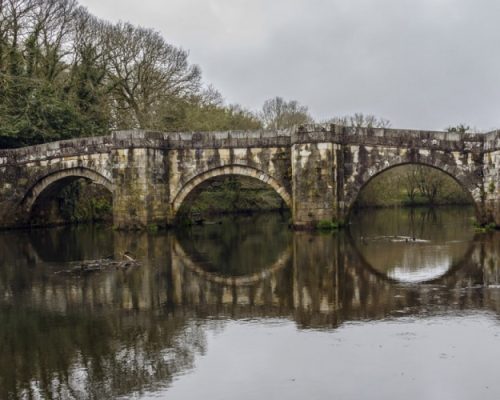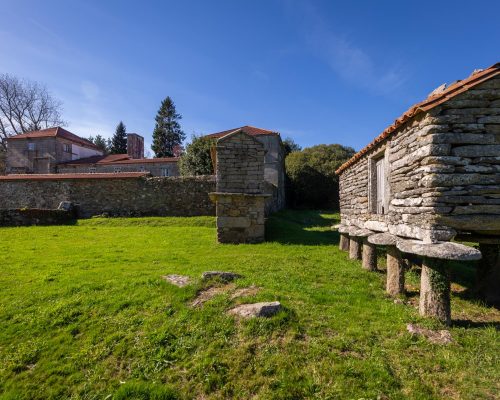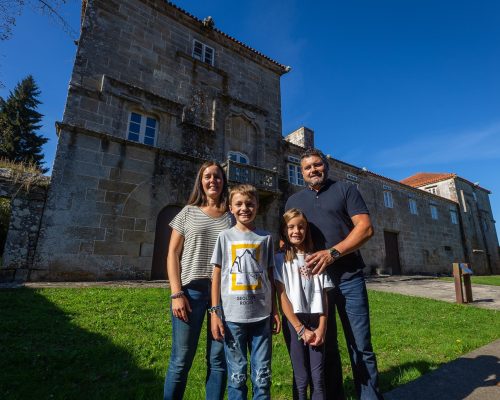Places not to be missed
Costa da Morte, sustainable tourist destination
Places not to get lost on the Costa da Morte
The Costa da Morte has an infinite number of places to visit, but we know that you don’t always have the time to see them all. That’s why we bring you a list of the most outstanding places on the Costa da Morte so that you can plan your trip more easily and maximize the time you spend in our lands. Below we show you the places not to get lost on the Costa da Morte.
Must-see places in A Laracha
The town hall of A Laracha has an endless number of places to visit, but the two essential are undoubtedly Gabenlle and Caión.
Gabenlle is a recreational area located about 2 kilometres from the town hall of A Laracha. It has a large picnic area, a river promenade around the Anllóns River with multiple bridges, restored mills and small waterfalls as well as a children’s recreation area and a river beach.
As for Caión , it is a small town of less than 1000 inhabitants that has a large beach on its outskirts. All in all, what makes this town special is its fantastic location on a small peninsula that juts out into the Atlantic and provides unique and unparalleled views.
Essentials in Cabana de Bergantiños
Cabana de Bergantiños is the cradle of megalithism on the Costa da Morte and its two places that you cannot miss are related to it as it could not be otherwise.
One of them is the Dolmen of Dombate. Known as the cathedral of Galician megalithism, this monument dates from the middle of the fourth millennium BC and at the time it was a large burial chamber and a place of rites and ceremonies. Today it is protected by a wooden structure and has a museum and guided tours.
The other place you can’t miss is the Castro de Borneiro. Inhabited from the fourth century B.C. to the first century A.D., the fort of Borneiro is a great example of what these fortified settlements of the Bronze Age and Iron Age were. Here you can walk along its many trails exploring all its history.
In Camariñas you can't miss...
If you are on the Costa da Morte one of the places you will need to visit is the area of Reira in the municipality of Camariñas and more specifically two of its points: Cape Vilán with its lighthouse and the rampant dune Monte Blanco.
The Camariñas lighthouse is the first electric lighthouse in Europe and is located on Cape Vilán. It was built after the maritime tragedies of the Irish Hull, Trinacria and especially the Serpent to guard one of the most dangerous stretches of the sea of the Costa da Morte and at the same time one of the most beautiful that you can look out over from the dizzying heights of this magical point.
Monte Branco is located next to the beach of O Trece and is the largest rampant dune in Europe. At its foot there is a complex of dunes among which grows the Caramiña, the fruit that gives its name to the town and by extension to the Council of Camariñas.
Places you can't miss in Carballo
On a trip to the Costa da Morte you cannot leave without visiting two of its best beaches located in the municipality of Carballo, such as Razo and Baldaio.
Razo beach has a total extension of 800 metres and is an important area protected by its natural and scenic wealth. Not only that, but this sandy area has everything you need to have a great day at the beach: blue flag, lifeguard service, parking and restaurant services nearby, as well as being an ideal enclave for surfing.
As for Baldaio beach , it has an extension of 4,000 meters and is located in a contour protected by the Natura 2000 network due to its rich biodiversity. In addition, this sandy area has a lifeguard service, toilets and showers, access adapted for people with reduced mobility and parking.
Places of interest in Carnota
The municipality of Carnota has two of the most visited places on the Costa da Morte such as the largest granary and beach in Galicia.
The carnota granary was built in 1768 and has 22 pairs of feet that give it a total of 34 meters in length and 1.90 meters in width. On one side it has three doors through which you could access its interior where the crops were kept. The size of a granary was proportional to the amount of a house’s harvest, so it also represented a symbol of the opulence and power that it had, in this case the clergy through tithing.
Carnota beach is more than 7 kilometres long and is a protected area by the Natura 2000 network due to its interest in terms of plant and animal biodiversity. In addition, its crescent shape is home to a complex of dunes and marshes next to an inland lagoon. All this constitutes a magical and beautiful space that is categorized by the German magazine “Traum Strände” as one of the 100 best beaches in the world.
If you go to Cee you can't miss
The Costa da Morte has great places to visit and many of them will make you fall in love such as the promenade and the windmills of San Adrián de Toba and the viewpoint of Gures located in the municipality of Cee.
Located in the small parish of Toba, the Passeig de São Adrián runs along a stretch of the Laxe stream and its mills , restored at the end of the 20th century. Nearby you can also find the church of San Adrián de Toba and the recreational area of Toba that has parking, tables and grills. A whole set in which you can spend a great day surrounded by nature in a quiet and cozy space.
The Gures viewpoint is undoubtedly one of those magical places that you will fall in love with. During the day it is the perfect place to contemplate the immensity of the ocean next to such special points as Fisterra, the Ézaro cove, Mount Pindo or the Lobeiras Islands. And at night it is the ideal enclave to enjoy the sky and its stars.
In Corcubión you must visit...
Two of the essential places to visit on the Costa da Morte and understand our culture and tradition are the town of Corcubión and its characteristic architecture and the Maritime Museum where the pieces that make up the seafaring history of the Costa da Morte are housed.
With its main facade full of houses with white wooden galleries and its cobbled streets, the town of Corcubión is the perfect place to observe the traditional architecture of the Costa da Morte. In addition, inside, as you walk through its streets, you will come across buildings such as the Romanesque church of San Marcos (12th century), the Pazo de los Condes de Altamira (15th century) or the Pazo de los Condes de Traba (15th century) as well as some houses of Indians such as Casa Teixeira (12th century). XVIII) or Casa Miñones (18th century) XIX). For all these reasons, since 1985 the town of Corcubión has been recognized as a Historic-Artistic Site.
The Maritime Museum of Corcubión is located in an old salting factory and is an essential place to understand the seafaring tradition of the Costa da Morte. Inside there is a collection of more than 1000 pieces related to the sea, navigation and fishing with which you can reconstruct, room by room, the history of our sea and the people who worked it.
Not to be lost in Coristanco...
Some places on the Costa da Morte lack the fame they really deserve and one of those cases is undoubtedly the Verdes refuge located in the municipality of Coristanco.
The Verdes refuge is a set of trails that run through the small town of Verdes. Driven by the Anllóns River, these routes are a living lung through which to stroll to marvel at the many surprises that the area holds, from small waterfalls with their own seat to enjoy the murmur of the water in total tranquility, completely restored mills and even a recreational area with a picnic area and barbecue area. Up to a total of 14 kilometres of route, many of them suitable for people with reduced mobility, which will allow you to disconnect and recharge your battery through nature.
If you go to Dumbria you have to see....
Two places that you undoubtedly need to see during your stay on the Costa da Morte are the waterfall of the Xallas River, in Ézaro, and the summit of Mount Pindo, A Moa, both located in the municipality of Dumbría.
La Fervenza do Ézaro It is a unique place and it is not for less since it is one of the few places where you can see a waterfall at the mouth of a river. And the fact is that the Xallas merges with the Atlantic Ocean through this spectacular fall of almost 100 meters high at the top of which you can visit a wide viewpoint that dominates the contour.
A Moa is the summit of Mount Olympus in Galicia, Monte Pindo, a magical place where you can see the last ray of sunshine in the old world. This is due to its altitude (627 metres) and its proximity to the sea a few kilometres away, a combination that allows you to see the sun a few minutes later than in the rest of continental Europe.
Essential places in Fisterra
Perhaps two of the most mythical and most visited places on the Costa da Morte are located in the municipality of Fisterra , such as its cape and lighthouse and the Langosteira beach.
Cape Fisterra and its lighthouse are perhaps one of the most recognized places on the Costa da Morte. Entering the sea from a maximum height of more than 100 metres, Cape Fisterra is, by tradition, the end point of the Camino de Santiago and a spectacular place whose vertiginous views leave no one indifferent.
Langosteira Beach is one of those beaches that has absolutely everything. From great natural beauty and an unbeatable enclave in the vicinity of the town of Fisterra to all the necessary services for you to spend an unbeatable day at the beach such as the lifeguard service, parking, nearby restaurant services and even a promenade where you can enjoy the views of the Atlantic Ocean.
In Laxe you have to visit...
Two points that will undoubtedly make you fall in love with the Costa da Morte are the Playa de los Cristales and the natural environment of Traba, both located in the municipality of Laxe.
The beach of the Crystals is a different place, to say the least, both in its composition and in its origin that serves as an example of the capabilities of nature. This strange enclave was once a glass dump and yet today it is a beach of colourful sand forged by the force of the sea. A magical place that recalls the benevolence that nature also possesses.
Traba’s natural environment is much more than just a beach. In it you can find a complex of dunes and a lagoon whose biodiversity you can contemplate while walking along its wooden walkways that will guide you throughout its extension. A point of reference for Surfing and other similar sports and a place where nature is shown in all its splendor.
If you go to Malpica you have to see...
In the municipality of Malpica are two of the essential places on a trip to the Costa da Morte such as the Sisargas Islands and the lighthouse of Punta Nariga.
The Sisargas Islands are three islets (the large, the small and the Malante) and in their past they were inhabited. To this day there are only a few buildings that testify to the passage of human beings through them, including the lighthouse. The importance of these islands lies in their birds and flora, many of them in danger of extinction, making the Sisargas a unique small stronghold in the world.
The Punta Nariga lighthouse is the most modern in Galicia. Built in 1995, this lighthouse and its foot are reminiscent of the bow of a ship crowned with a figurehead whose shapes are the mix between a man and a seagull about to take flight. And it is not only the construction of the lighthouse that has recognizable shapes because walking around you can find rocks carved by the wind itself that will remind you of animals.
Places not to be missed in Mazaricos
The Costa da Morte is nature in its purest form and in the case of the essential points in the municipality of Mazaricos you will have a great example of this reality.
The viewpoints of Mount Aro and Alto da Ruña will make you live an immersive experience of nature in its purest form. From its heights you will be able to contemplate the orography of the Costa da Morte in its entirety with its mountains, forests and even the sea in the distance seeing how everything merges into a single point. And not only that, you can enjoy a moment of adrenaline by launching yourself down the zip line while you have that spectacular background.
There are numerous waterfalls in the municipality of Mazaricos, so many as to have its own route of the “fervenzas” (waterfalls), a route that we definitely recommend you to do. However, if you don’t have enough time to travel its total 18 kilometers, here are the two most outstanding ones, such as Santa Locaia and Noveira, two magical places in nature.
Places you have to visit in Muxía
In the municipality of Muxía are two of the most famous and visited enclaves of the Costa da Morte such as the sanctuary of Punta de la Barca and the monastery of Moraime.
The Sanctuary of Virxen da Barca is a place of legend. And this would be the point where the apostle James received the Virgin Mary to receive the message that he should return to Jerusalem. As a witness to this miracle would be the different stone parts of the boat with which the Virgin came ashore.
The church and monastery of Moraime are a key ensemble within the Romanesque architecture of the Costa da Morte. Built on an ancient Roman necropolis, the church has a basilica floor plan and a façade with rose windows and Romanesque windows. There is a façade reminiscent of the Cathedral of Santiago itself, a representation of the Last Supper at the entrance door to the monastery and a few years ago some paintings representing the seven deadly sins were discovered inside.
Must-sees in Ponteceso
On a trip to the Costa da Morte you need to have two points of the municipality of Ponteceso on your itinerary such as the Roncudo and its lighthouse and the Monte Blanco viewpoint.
Cape Roncudo together with its lighthouse are a point of great fame and this is due to the barnacle. At this point you will find the best specimens of this coveted species that even has a gastronomic festival in the town where the Roncudo is located: Corme. But it is also a spectacular place, a cape that juts into the Atlantic and where you can see the force of the ocean in all its glory.
The Monte Blanco viewpoint is an example of the beauty that inspired the acclaimed poet from Ponteceso Eduardo Pondal (author of the Galician anthem). From its heights you can see the Corme and Laxe estuary, the Anllóns estuary and the Lodeiro cove in all its splendour. And at night this is a magnificent point where you can enjoy the sky and all its stars.
If you go through Vimianzo you should not miss...
Two places on the Costa da Morte that you will fall in love with are located in the municipality of Vimianzo and are its Castle and the paths that run through the Penedos de Pasarela
The Castle of Vimianzo enjoys a long and intense history where power struggles took place over time. But that does not mean that today it enjoys less life, quite the opposite, and that is that this spectacular fortress is still open today with multiple exhibitions and demonstrations. Not only that, every July the popular festival of “O asalto ao Castelo” is celebrated in it, a representation of the Irmandiña revolt with which the whole town is involved.
Some places have a special aura, in them resides a sensation that makes us feel small and at the same time widens something inside us. One of them is, without a doubt, the Penedos de Pasarela , a place where stones take shape and let the imagination fly.
Recommended places in Zas
If you visit the Costa da Morte you cannot leave without having visited two places of the municipality of Zas such as the Torres do Allo and the promenade and bridge of Brandomil.
Traveling to the past is not possible, although you can do something similar such as visiting the Torres do Allo , a place where you can discover what life was like for the nobility of the early Middle Ages through the restoration of this pazo and conversion into a museum. And not only that, because its enclave and surroundings are also worth exploring to find an old dovecote or a magnificent ancient fountain.
The Brandomil Bridge is a historic piece of the Camino de Santiago. Pilgrims who made the way by sea traveled through it. Today it is no longer part of the pilgrims’ itinerary, but it is still an architectural piece to visit and not only for its beauty but also for its location and the possibilities that its location provides.
Origin of Earth, Sky, and Sea
Experience the Costa da Morte
What to see
Discover unique landscapes and historical monuments that will take your breath away.
What to do
Live unforgettable adventures with activities for all tastes and ages.
Plan your trip
We show you how to get there and how to get around on the Costa da Morte.
Discover the best restaurants
Where to eat on the Costa da Morte
Discover the best places to enjoy the authentic gastronomy of the Costa da Morte. Flavour and tradition await you in every corner!

